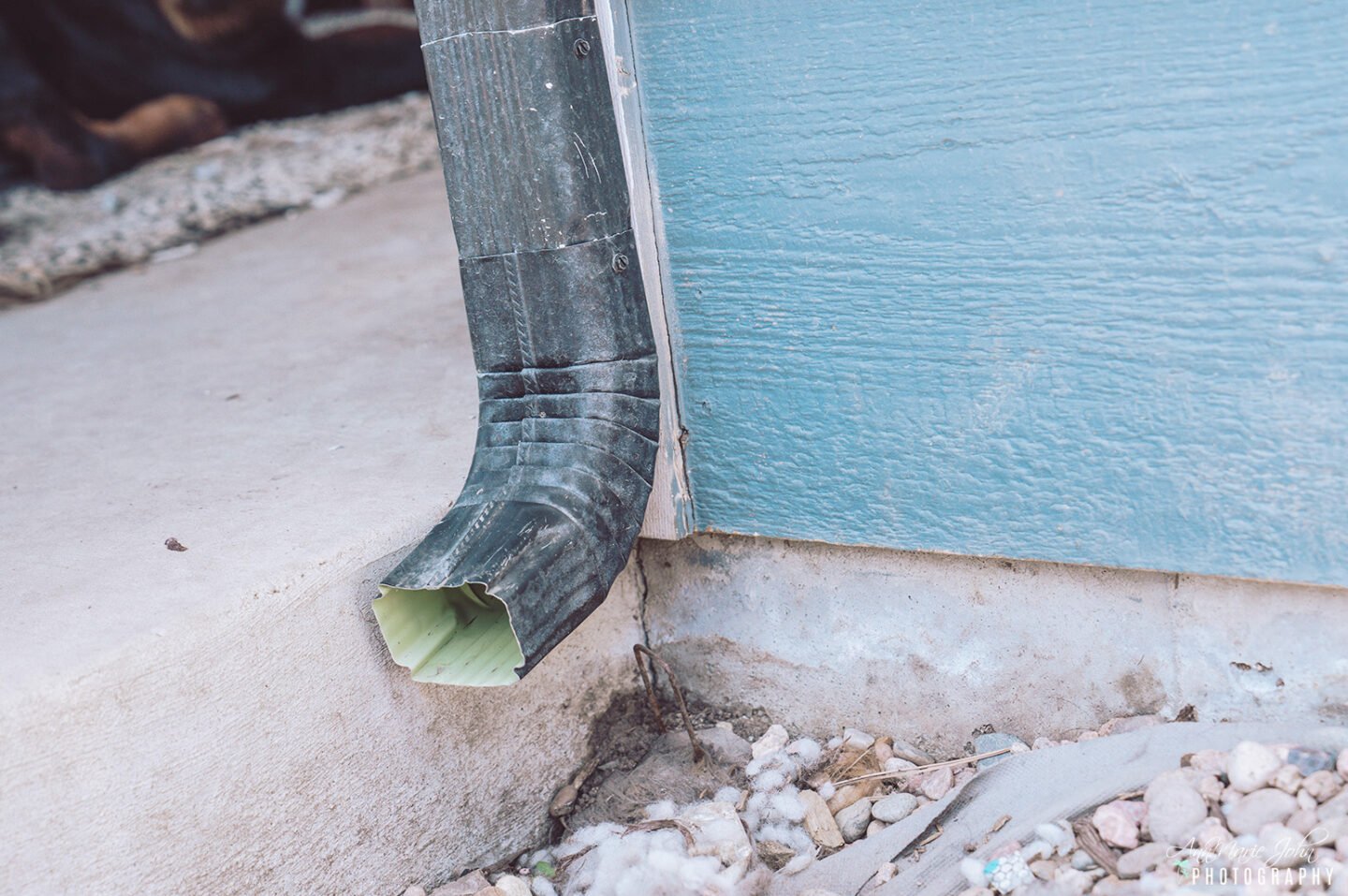Your home’s gutter system is the one home fixture that, quite possibly, does the most preventative good for your property. It helps to protect the roof, fascia, exterior surface, and foundation from costly, catastrophic water damage – when properly installed, of course. When installed by a team not well-versed in gutter positioning and sound attachment, the drainage system can’t perform its sole-intended purpose – to keep water channeling away from your home.
Look for signs that your gutter system is beginning to fail (or has already failed) when you perform your seasonal home maintenance inspection. Notice any signs of corroded gutters, areas where gutters are beginning to detach from the house, bubbling paint, or stained siding, for example. If water can find a way into your house, it will.
One of the biggest culprits of extensive water damage is misoriented downspouts and gutter extensions. When those vertical pipes that work to funnel water from the roof area downward toward the ground, combined with the gutter extensions that move it away from the home’s foundation, fail, the result could be a huge hit to the wallet.

Types of Water Damage from Misoriented Downspouts and Gutter Extensions
Quite often, homeowners fear that their gutters will fail and cause roof swelling, ice damming, and destroy flower beds or landscaping, but there are some even more expensive water damage possibilities at the foundation level that are the result of downspouts and gutter extensions that just aren’t positioned correctly.
When left untreated for extended periods of time, the cost of repairing the damage could exceed the entire cost of your home!
Mold and Mildew
Water penetrating a foundation can begin to grow mold and mildew immediately but may not become visible to the human eye for a few days – causing some musty odors to emanate from the basement. For those family members who may have allergies or other respiratory challenges, mold and mildew growth could quickly deteriorate their health and may result in the need for professional medical attention.
Depending on the severity and the size of your unfinished basement, professional mold remediation costs an average range of $10 to $25 per square foot, whereas many homeowners see a total average cost of between $350 and $2000 in the US. If the mold growth is extensive, mold removal may be necessary, and that’s going to increase the total.
Foundation Moisture, Cracks, and Chips
The home’s foundation is part of what keeps your walls and roof intact, but when the foundation is left to prolonged water damage, the home could see destructive results. When the foundation is permitted to absorb water, it can expand and cause issues like cracking, chipping, excess moisture locking, doors no longer opening or closing correctly, windows won’t open, and ants and termites invading your home.
Major foundation cracks could cost upwards of $15,000 to fix. If the foundation is left in disrepair, over time the issues become unfixable and the home may be condemned as unsafe to live in. Many insurance companies will not cover the cost of damage that could have been prevented. This issue is also prevalent when gutters are not cleaned or maintained.
Flooded Basement
With unfinished basements, cleaning up minimal amounts of water that has flooded through the foundation can take one powerful wet vac and an entire day of dragging buckets of water up the stairs, but if your basement is finished, flooding becomes a much more costly problem. Drywall, studs, concrete, carpet, and appliances can all become unusable when basements are flooded due to misdirected downspouts and gutter extensions.
Chemical Hazards
If your home was built on a previous burial ground, local waste disposal area, or other potentially chemical-laden ground, rainwater mixes with those chemicals, and when allowed to seep into your home’s structure, your home could see major issues alongside water damage. Before purchasing a home, it’s imperative to do your environmental due diligence on the property to be sure you understand any toxic risks and the potential cost of remediation.
In Conclusion
All water should be channeled at least 10 feet away from the home to avoid costly damage and potential health risks to your home’s structure. Not cleaning or maintaining your gutter system can also cause these same types of damage.
Just like some doctors prescribe taking vitamins and exercising to keep your body healthy, prevention is the best medicine for your home’s health too. Keep your gutters free from debris with a semi-annual cleaning, and don’t forget to include gutters in your visual seasonal home inspection.
